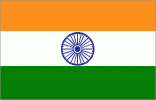 |
 |
JANTAR MANTAR - INDIA
 |
 |
| Location: | Geographic coordinates: | Area: | Area - comparative: |
| Southern Asia, bordering the Arabian Sea and the Bay of Bengal, between Burma and Pakistan | 20 00 N, 77 00 E | total: 3,287,590 sq km | slightly more than one-third the size of the US |
| Population: | Languages: | Capital: | Currency: |
| 1,029,991,145 (July 2001 est.) | English enjoys associate status but is the most important language for national, political, and commercial communication, Hindi the national language and primary tongue of 30% of the people, Bengali, Telugu, Marathi, Tamil, Urdu, Gujarati, Malayalam, Kannada, Oriya, Punjabi, Assamese, Kashmiri, Sindhi, Sanskrit, Hindustani (a popular variant of Hindi/Urdu spoken widely throughout northern India | New Delhi | Indian rupee (INR) |


| Types of rocks used on the monument: | Bricks (clay) that are made of crushed Shale (sedimentary rock). |
JANTAR - MANTAR - The gigantic masonry astronomical instruments are among the most startling and visually compelling monuments in the entire Indian architectural record. According to the rays of the Sun falling on it, it helped the people calculate to some extent the time of the day. Jantra(yantra-meaning instrument) and mantra-formula) was built in 1724 by Maharaja Jai Singh of Jaipur, who later built observatories on the same lines in Jaipur, Ujjain, Varanasi and Mathura. According to historical records, the Maharaja found the then existing astronomical instruments to record totally accurate observations and so he decided that such bigger structures should be constructed. The instruments at Jantar mantar are fascinating for their novel approach, though as opf today, they cannot be relied upon to give the kind of accuracy that they gave then because of the growth of multistoreyed structures around it which block the avenues of measurement.
© Guillermo Rocha, P. G. / Brooklyn College Geology Department